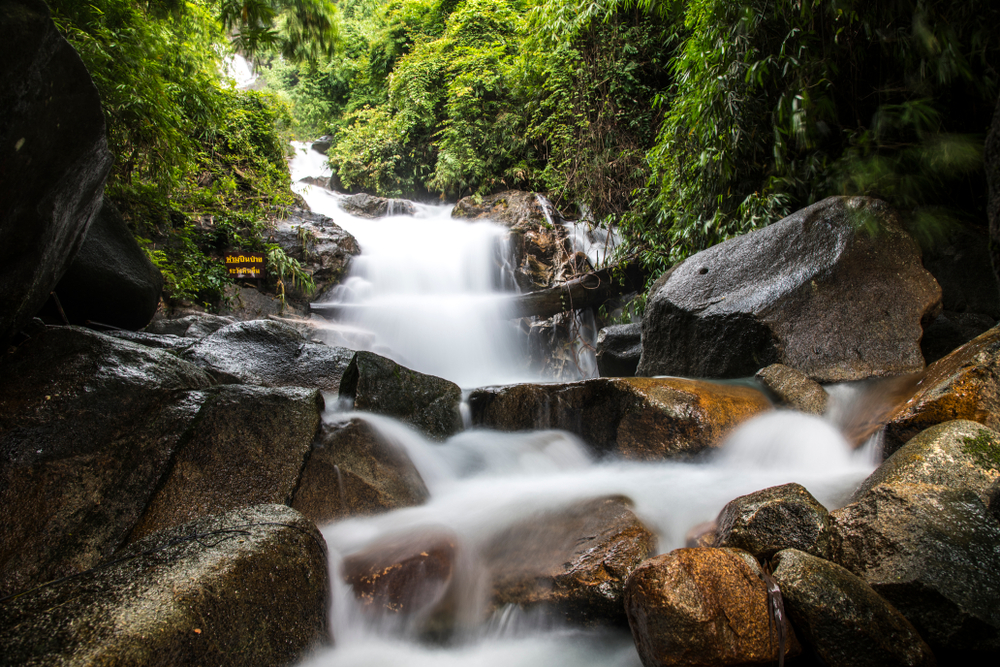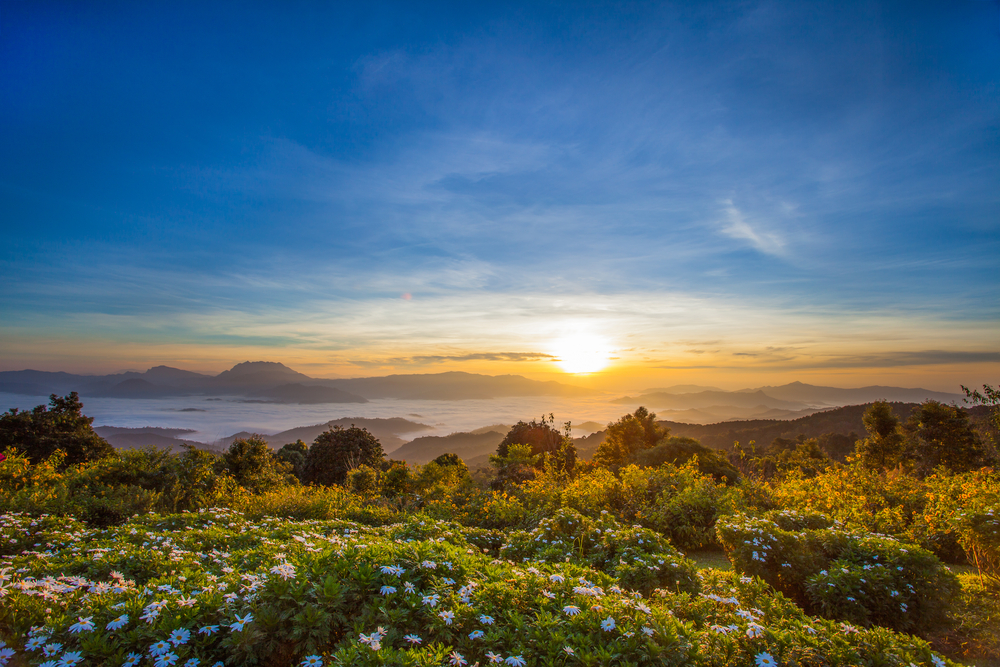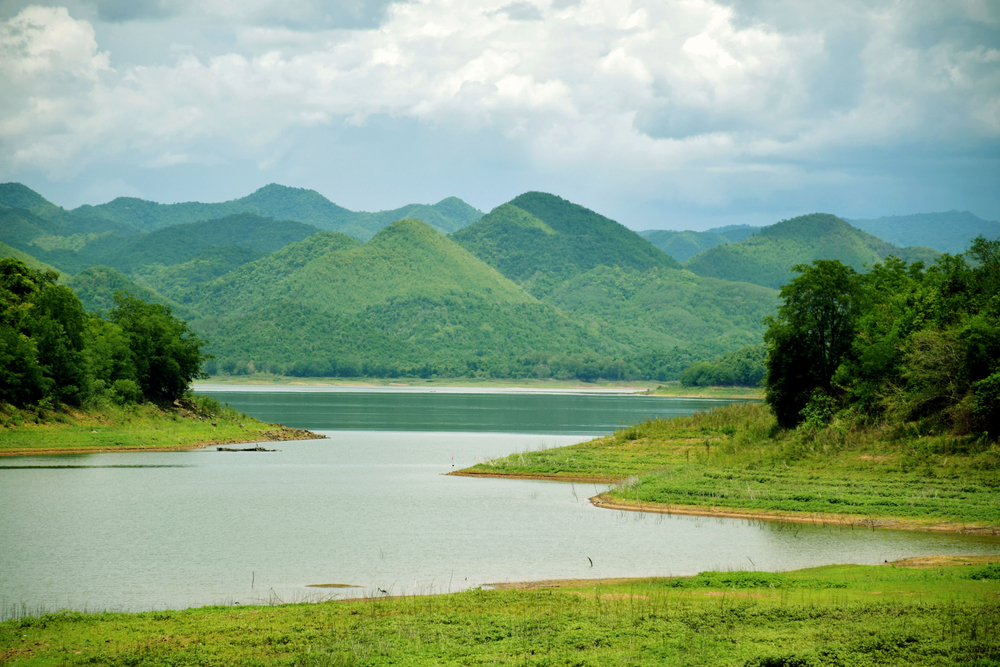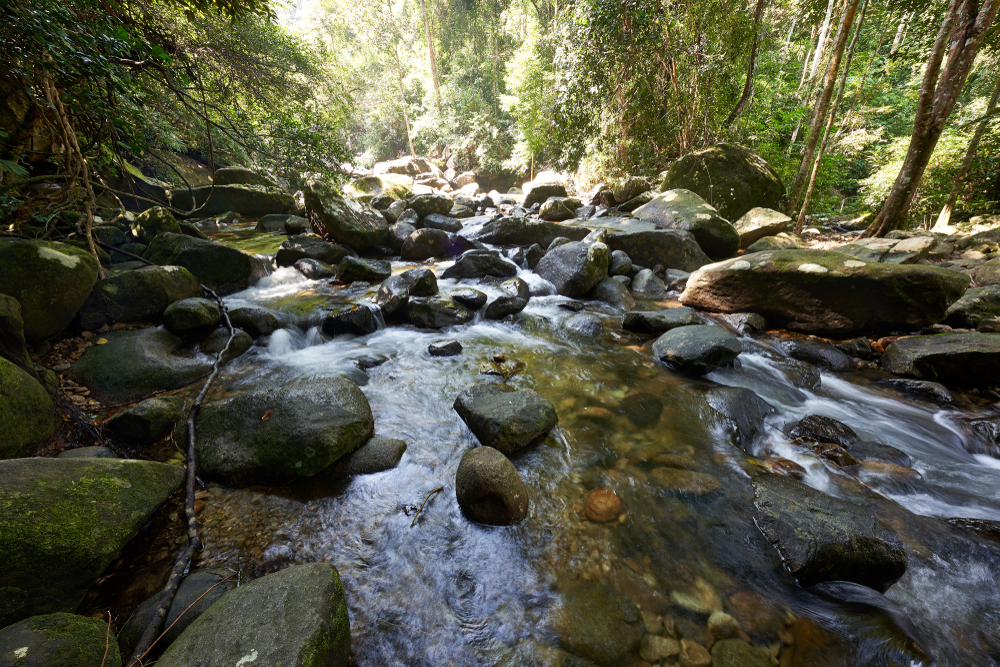Khao Khitchakut Overview
Khao Khitchakut National Park, known in Thai as อุทยานแห่งชาติเขาคิชฌกูฏ, is a serene and spiritually significant protected area located in Chanthaburi Province in eastern Thailand. Spanning approximately 23 square miles (59 square kilometers), the park is one of the smallest in Thailand but offers a wealth of natural beauty, cultural heritage, and unique biodiversity.
Its landscape is dominated by lush tropical forests, rugged hills, and striking granite peaks, with the most notable being Khao Phra Bat, a mountain that rises to 1,085 meters (3,560 feet) above sea level. This peak is home to a revered Buddhist pilgrimage site, drawing visitors from all over the region, especially during the annual pilgrimage season.
The terrain of Khao Khitchakut is a harmonious blend of dense evergreen forests, rolling hills, and rocky outcrops, creating an enchanting atmosphere. Visitors will encounter a variety of waterfalls, including Krathing Waterfall, a stunning multi-tiered cascade surrounded by verdant greenery. Streams and small rivers crisscross the park, providing a lifeline for the flora and fauna that thrive in the area. The vegetation is characterized by a mix of tropical hardwoods, bamboo groves, and ferns, offering a rich and diverse habitat.
Khao Khitchakut is a haven for wildlife enthusiasts. The park is home to a variety of mammals, such as wild boars, civets, and barking deer, while smaller creatures like squirrels and lizards are commonly sighted.
Birdwatchers will be delighted by the park’s avian diversity, which includes species such as hornbills, kingfishers, and barbets. The tranquil environment also supports a plethora of butterflies, adding a splash of color to the verdant surroundings.
One of the park’s most popular features is the sacred Buddha footprint, located near the summit of Khao Phra Bat. The site is a revered destination for Thai Buddhists, and many visitors undertake the challenging hike to pay their respects.
The annual pilgrimage to the footprint occurs between February and April and attracts thousands of devotees. This spiritual aspect of the park is seamlessly intertwined with its natural allure, making it a unique destination.
Visitors to Khao Khitchakut National Park can engage with its beauty and significance through various activities. Hiking trails lead adventurers through lush forests to breathtaking viewpoints and waterfalls. The park is also a wonderful spot for picnicking, birdwatching, and nature photography. The cooler months from November to February are particularly popular for exploring the park’s serene trails.
Conservation efforts in Khao Khitchakut focus on preserving its unique biodiversity and managing the impact of human activity, particularly during the pilgrimage season. Park authorities have implemented measures to balance visitor access with the preservation of the fragile ecosystem. Despite its challenges, including managing waste and habitat protection, the park has successfully maintained its natural and cultural treasures, making it a model for sustainable park management.

















































































